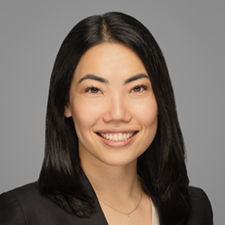While most new medical students are women, surgical specialties remain dominated by men. These surgical specialties require the surgeon’s hands to interact properly with instruments to perform procedures safely and effectively. But how does the size of various surgical instruments—and the resulting ergonomics—affect the experiences of surgeons, given that men’s hands are about 12% bigger than women’s on average?
A team of researchers has set out to help answer that question and more by evaluating surgical instrument fit, ergonomics, experiences of surgical training and day-to-day operations among surgeons in the U.S. The team’s hypothesis is that the surgical instrument fit and ergonomics will differ among surgeons by gender and specialty. They also hypothesize that women, along with others assigned female at birth, will experience more adverse ergonomic sequelae—such as grip fatigue—due to poor instrument fit.
Their research will get a boost thanks to a grant from the Joan F. Giambalvo Fund for the Advancement of Women, which provides scholarships of up to $10,000 to support research advancing the study of women in the medical profession and strengthening the AMA’s ability to identify and address the issues affecting women physicians and medical students.
The Giambalvo Fund was established by the AMA Women Physicians Section (AMA-WPS) in conjunction with the AMA Foundation. Its first grant was awarded in 2006, and it has made 34 grants to date. Additionally, the AMA-WPS celebrates women physicians, residents and medical students every September during Women in Medicine Month.
“As we celebrate Women in Medicine Month, the AMA is honored to recognize this year’s awardees for their impressive work aimed at addressing gender disparities,” said AMA President Jesse M. Ehrenfeld, MD, MPH. “Through this annual grant program, the AMA reaffirms its commitment to increasing the influence of women physicians and advocating for women’s health issues. We will continue to support efforts to bring awareness to and help address important issues facing women in medicine today.”
“We believe elucidating the impact of surgical instrument ergonomics on female surgeons and surgeons in training will be far-reaching and has the potential to improve operative experiences for women in the future,” said Yoshiko Iwai, MS, principal investigator and a fourth-year medical student at the University of North Carolina at Chapel Hill School of Medicine.
“We are grateful for the opportunity to pursue this work in collaboration with our outstanding colleagues at the University of North Carolina, University of Pennsylvania, University of Texas MD Anderson Cancer Center and University of Wisconsin-Madison,” Iwai said.
Instrument size, pain and discomfort
The effects of ergonomic challenges on a person’s experience as a surgeon, surgical training, and sequalae related to pain and discomfort have not been sufficiently explored. It is also unclear how these surgical instruments can be used to better meet the demands of a more diverse workforce, notes the team’s application.
The team of co-investigators working with Iwai includes:
- Oluwadamilola M. Fayanju, MD, MPHS.
- Rebecca Snyder, MD, MPH.
- Caprice C. Greenberg, MD, MPH.
Additionally, the increased use of robot-assisted surgeries has created a new opportunity to explore how to improve ergonomic challenges such as those found with laparoscopic surgical instruments, which are harder for people with smaller hands to use.
“The goal of this study is to conduct a robust survey of surgeons and surgeons-in-training in the U.S. to assess the broad and potentially far-reaching implications of ergonomics on recruitment, retention and the experience of training and working as a surgeon,” says the team’s application. “Our questions will also be aimed at obtaining a more nuanced understanding of the different types of instruments, surgeries and tools that cause the most operative challenges to identify potential targets for future intervention.”
Impact on training experience
Iwai literally has firsthand training experience with surgical instruments that are too big.
“I noticed a shortage of appropriately sized surgical equipment for my hands and the hands of my female residents and attendings,” she said. “During this time, I appreciated the tangible discomfort and ergonomic inefficiency of surgical instruments that were often too large for me.”
That experience sparked Iwai’s interest “in the relationship between surgical instruments and the long-term sequalae of ergonomic challenges, as well as their impact on trainees as they learn how to operate.”
Conducting this research “has the potential to improve the learning and operating environment for diverse surgeons,” Iwai said.
The AMA has adopted numerous policies aimed at encouraging medical associations and other relevant organizations to study gender difference in income and advancement trends, by specialty, experience, work hours and other practice characteristics, and develop programs to address disparities where they exist. The AMA will continue to strongly support equity and diversity across medicine and promote professional growth and development for physicians at every stage of their careers.
As part of the AMA’s celebration of Women in Medicine month, the AMA-WPS will host a webinar, “Women Physician Leaders and Balance,” on September 28 exploring ways to support women in medicine as they face challenges in aligning their career goals with personal responsibilities.
The AMA-WPS consists of more than 100,000 members of the AMA and aims to increase the number and influence of women physicians in leadership roles and to advocate for and advance the understanding of women's health issues.




